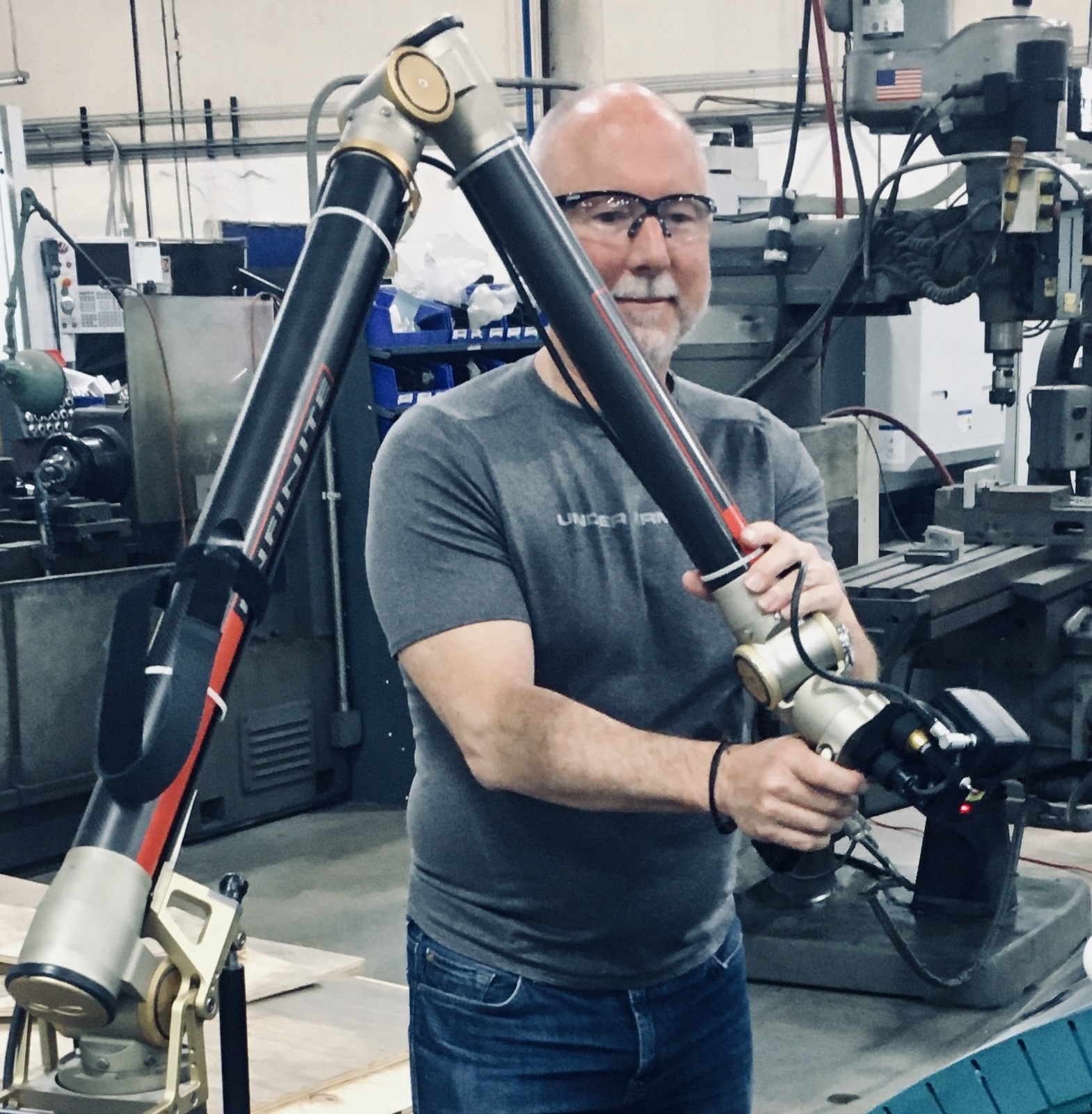
Article by NVision Inc.
(Southlake, Texas) -- Two recent personal protective equipment-related projects completed by NVision Inc. demonstrate the growing role that noncontact scanning/measurement technologies have in the race to create products and designs to minimize exposure to COVID-19.
NVision, Inc., a leader in 3D measurement and engineering services for more than 30 years, has assisted medical manufacturers in a wide variety of projects over the years, from measuring and inspecting surgical scalpels to reverse engineering heart stents and orthodontic braces.
In one recent project, NVision provided engineering services to a Texas PPE manufacturer, helping accelerate the company’s production of a much-needed protective mask earmarked for medical personnel. NVision engineers 3D-scanned plaster models of the mask, using the resulting data to create a computer-aided design (CAD) file which was used to build the special tooling necessary for production.
Personal Protection Equipment (PPE) includes clothing--gloves, coveralls, face shields, masks, and more--designed to protect the wearer against a number of potential hazards including viruses and infectious diseases. In the current COVID-19 pandemic, masks are a vitally important line of defense against the virus for healthcare workers, first responders and the general public.
NVision was contacted by a PPE manufacturer that needed a CAD model of a protective mask in three days in order to start creating the tooling for mass production. The company had only handmade plaster models of the mask; no previous computer models or designs existed.
“We had done work for this customer earlier on a Peterbilt Truck Project and they came to us with the mask project,” says Steve Kersen, president of NVision. “The plaster molds for the mask had extremely challenging contours and to hand-measure its complex curvatures using calipers and other tools would have taken the manufacturer months, postponing production significantly.”
The mask will be made of vacuum-formed plastic and consists of two parts--an inner and an outer part--with replaceable filter material. SolidWorks CAD models were required to facilitate the machining of suitable dies/molds, as the vacuum-forming process requires dies made from a more durable material, often wood or a metal.
After receiving the plaster models, NVision technicians quickly set to work using the company’s HandHeld laser scanner to collect data on the mask’s surface geometry and dimensions.
The HandHeld scanner is a powerful portable scanning device capable of capturing 3D geometry from objects of almost any size or shape. The scanner is attached to a mechanical arm that moves about the object, allowing the user to capture data rapidly with a high degree of resolution and accuracy. As the object is inspected, the scanner generates a point cloud consisting of millions of points, each with x,y,z coordinates and i,j,k vectors. These points comprise an exact duplicate of the object’s surface, down to the most minute detail. The scanner comes with integrated software that is used to convert the point cloud to an STL polygon and an optional tripod provides complete portability in the field. Intuitive software allows real-time rendering, full model editing, polygon reduction, and data output to all standard 3D packages.
The scanning of the mask models took only two hours, after which NVision technicians converted the STL file to a native parametric SolidWorks CAD format from which tooling could be produced. “During the modeling process we were also able to make some changes that improved the mask’s design,” says Kersen. “We made it more symmetrical in shape and modified it to be more suitable for the manufacturing process.”
NVision engineers provided the mask manufacturer with a CAD model from which it could build the tooling to begin production and meet its deadline for delivery of the masks. “Without the fast and accurate measurements provided by laser scanning, the customer would have lost a great deal of time and money in performing manual measurements,” says Kersen. “With PPE, time to market is critical both for the health of those people waiting for masks as well as the business success of the manufacturers who need to reduce production time.”
In another project, NVision was asked to scan a series of credit card readers in order to create seamlessly fitting safety covers to prevent transmission of viruses. The covers needed to fit tightly on the readers, so it was essential to obtain the exact measurements of the readers. NVision again used its HandHeld scanner to obtain the precise measurements of the readers, first converting the point cloud to a raw STL file, then importing the file into specialized modeling software and processing the data to an IGES/STEP model, and then further processing to a native SolidWorks CAD model with full feature tree. From that point, client engineers were able to use the CAD model to create tooling for manufacturing the covers.
“Concerns about personal health and safety, in all our interactions, are understandably very high at this time,” says Kersen. “These two projects we recently completed show how advanced measurement and inspection can substantially reduce the time to market for those who are making the products needed to help ensure our health and well-being. We’re proud to be part of the effort.”
Contact Details
Related Glossary Terms
- computer-aided design ( CAD)
computer-aided design ( CAD)
Product-design functions performed with the help of computers and special software.
- computer-aided design ( CAD)2
computer-aided design ( CAD)
Product-design functions performed with the help of computers and special software.






